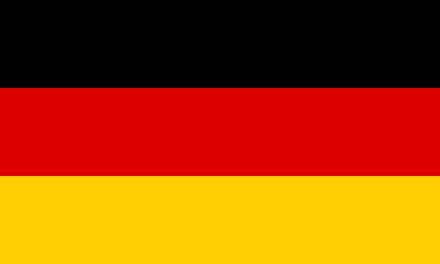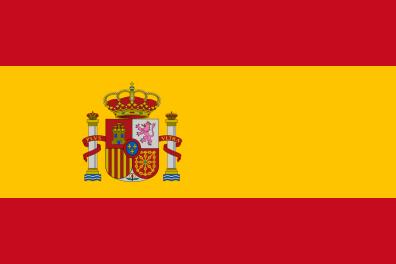Donate to Support Supercluster
Your support makes the Astronaut Database and Launch Tracker possible, and keeps all Supercluster content free.
SUPPORTSupercluster on Patreon
Your support makes the Astronaut Database and Launch Tracker possible, and keeps all Supercluster content free.
SUPPORTThis goes
to space
Transporter-12
SpaceX’s dedicated SmallSat rideshare program, Transporter, is designed to lower the cost of access to space for small satellite customers with rideshare flights to Earth orbit. These customers include a variety of space companies, developing nations, university programs, and new startups.
Transporter-12 Payloads:
Impulse-2 (Impulse Space, Mira tug)
Bluebon (6U XL, TelePIX, Korea)
FOSSASat TAT-O (3U, FOSSA Systems, Spain)
(hosted) Triclops (Starfish Space)
(hosted) Holmes (HEO Robotics)
Exolaunch
Acadia-6 (microsat, Capella)
AlAinSat-1 (3U, , UAE)
Balkan-1 (16U, Endurosat)
Connecta IoT (4x 6U, Plan-S, Turkey)
Forest-3 (8U, OroraTech, Germany) +
GESat GEN1 (16U, Absolut Sensing) (bus Nanoavionics) +
SkyBee-1 (HiVE constellation) (Constellr, Germany) (bus Nanoavionics) +
TROLL (6UXL, TRL Space) (ISISpace bus) +
Veery-0F (1U, Care Weather)
Alba Orbital
HADES-R (1.5P, HYDRA SPACE SYSTEMS, SPAIN)
HYDRA-T (1.5P, HYDRA SPACE SYSTEMS, SPAIN)
HYPE AGH (1P, AGH UNIVERSITY, POLAND)
POQUITO (1P, SNT UNIVERSITY OF LUXEMBOURG)
SKYLINK-1 & -2 (2x 3P, HELLO SPACE, TÜRKIYE)
PROMETHEUS-1 (1P, U. DO MINHO & INSTITUTO SUPERIOR TÉCNICO (PORTUGAL), CARNEGIE MELLON (USA)) +
Maverick
LIME (3U, NOVI)
MBZSat
Elevation-1 (6U, XDLINX Space Labs, India) +
GARAI A (Satlantis, Spain) +
Kestrel-0A (8U, Hawkeye 360)
Leader-S (3U, ANSER (Advanced Nanosatellite Systems for Earth observation Research))
ANSER Leader-S (3U, ESA)
Centauri 7/8 (2x 12U, Fleet Space)
Centauri 9 (Fleet Space)
Pelican-2 (Planet) +
Ray (Inversion Space, has reentry capsule)
SIGI (Reflex Aerospace, Germany) +
UzmaSAT-1 (Satellogic/Uzma (Malaysia)) +
Winnebago-2 (Varda)
SuperDove Flock 4G (36x 3U, Planet) +
TechEdSat-22 (1U, NASA)
Lyra Block 1 (2x EchoStar Global)
PARUS-T1 (3U, TASA, Taiwan)
SEOPS
SAT GUS (12U, CrunchLabs)
D-Orbit ION SCV-014
D-Orbit ION SCV-016
This goes
to space
Ray
Inversion builds re-entry vehicles to deliver cargo from space. “The advent of aircraft enabled the sky to be utilized for transportation. Inversion seeks to achieve the same breakthrough for space.”
"Ray is the cheapest, fastest developed, and smallest fully-operational space capsule ever. The purpose of the Ray capsule is to develop technology for Arc capsules."
After spending at least a week in orbit, Ray will perform a series of burns to lower its orbit and reenter. The reentry capsule will deploy parachutes and splash down off the coast of California.
Ray is a development step towards Arc. Over 90% of Ray's systems are developed in-house to build heritage, processes, and tools that lead to Arc.
Caption and image courtesy of Inversion.
On this
rocket
Falcon 9 (Block 5)
Falcon 9 is a reusable, two-stage rocket designed and manufactured by SpaceX for the reliable and safe transport of people and payloads into Earth orbit and beyond.
Falcon 9 is the world’s first orbital-class reusable rocket.
Stats
Total launches: 425
Total landings: 381
Total reflights: 354
The Falcon 9 has launched 52 humans into orbit since May 2020
Specs
Height: 70 m / 229.6 ft
Diameter: 3.7 m / 12 ft
Mass: 549,054 kg / 1,207,920 lb
Payload to Low Earth Orbit (LEO): 22,800 kg / 50,265 lb
Payload to Geostationary Transfer Orbit (GTO): 8,300 kg / 18,300 lb
Payload to Mars: 4,020 kg / 8,860 lb
On January 24, 2021, Falcon 9 launched the first ride-share mission to Sun Synchronous Orbit. It was delivering a record-setting 143 satellites to space. And while this was an important mission for SpaceX in itself, it was also the moment Falcon 9 overtook United Launch Alliance’s Atlas V for the total number of consecutive successful launches.
SpaceX’s Falcon 9 had become America’s workhorse rocket, launching 31 times in 2021. It has already beaten that record this year, launching almost an average of once a week. While most of the launches deliver Starlink satellites to orbit, the company is still launching the most commercial payloads to orbit, too.
Falcon 9 is a medium-lift launch vehicle, with the capability to launch over 22.8 metric tonnes to low earth orbit. Unlike any other rocket, its first stage lands back on Earth after separating from its second stage. In part, this allows SpaceX to offer the cheapest option for most customers with payloads that need to reach orbit.
Under its ride-share program, a kilogram can be placed in a sun-synchronous orbit for a mere 1.1 million dollars, far cheaper than all other currently operating small satellite launch vehicles.
The reusability and fast booster turnaround times have made Falcon 9 the preferred choice for private companies and government agencies. This has allowed SpaceX to capture a huge portion of the launch market.
Photo courtesy of Jenny Hautmann for Supercluster.
From this
launch site
SLC-4E - Vandenberg Space Force Base, California
Space Launch Complex 4 (SLC-4) at Vandenberg Space Force Base is SpaceX’s west coast launch and landing facility, with its launch pad designated SLC-4E (the eastern-most of the two areas). Originally built in the early 1960s for Atlas-Agena rockets, the pad served that rocket line until 1967, when it was taken offline and rebuilt for Titan IIID rockets. From 1971 to 1988, SLC-4E launched Titan IIID rockets, after which it was reconfigured for Titan IV missions, which continued between 1991 and 2005.
In 2011, SpaceX leased SLC-4E and spent two years rebuilding the pad for its Falcon 9 rocket. From 2013 to 2019, the pad exclusively supported Falcon 9 polar missions. However, in 2020, SpaceX began splitting polar launches between Vandenberg and Cape Canaveral, after the Air Force lifted a 51-year ban on Florida-based polar launches, previously imposed due to the risk of overflying Cuba during launch. Despite these new opportunities from Florida, SpaceX plans to continue utilizing Vandenberg, with many more launches scheduled from this location.
Photo courtesy of SpaceX
Booster will
land here
Landing Zone 4 (LZ-4) - Vandenberg Space Force Base, California
Landing Zone 4 (LZ-4) is SpaceX’s only West Coast landing pad for the Falcon 9 first stage. Activated in 2018, the pad was constructed on the site of the former SLC-4W launch pad at Vandenberg Space Force Base in California.
SLC-4W was originally developed between 1963 and 1965 to support Atlas-Agena rocket launches and was located just 427 meters (1,400 feet) from SLC-4E. After the Atlas-Agena program ended, the pad was rebuilt for the Titan IIIB rocket program, which operated from 1966 to 1987. Following the retirement of the Titan IIIB, SLC-4W was reconfigured for Titan 23G rocket launches from 1988 to 2003.
In 2015, SpaceX leased SLC-4W, renaming it Landing Zone 4 and converting it into a dedicated landing site for Falcon 9 first stages. The first Return-To-Launch-Site landing of a Falcon 9 at Landing Zone 4 occurred on October 7, 2018, after the successful launch of the SAOCOM 1A satellite.
Photo courtesy of Pauline Acalin for Supercluster
GET THE SUPERCLUSTER APP
THE SUPERCLUSTER PODCAST
A podcast exploring the amazing milestones that changed space history, the wildest ideas that drive our future, and every development in this new Golden Age of Space.
Donate to support
Your support makes the Astronaut Database and Launch Tracker possible, and keeps all Supercluster content free.
SupportCOPYRIGHT 2021 SUPERCLUSTER LLC











